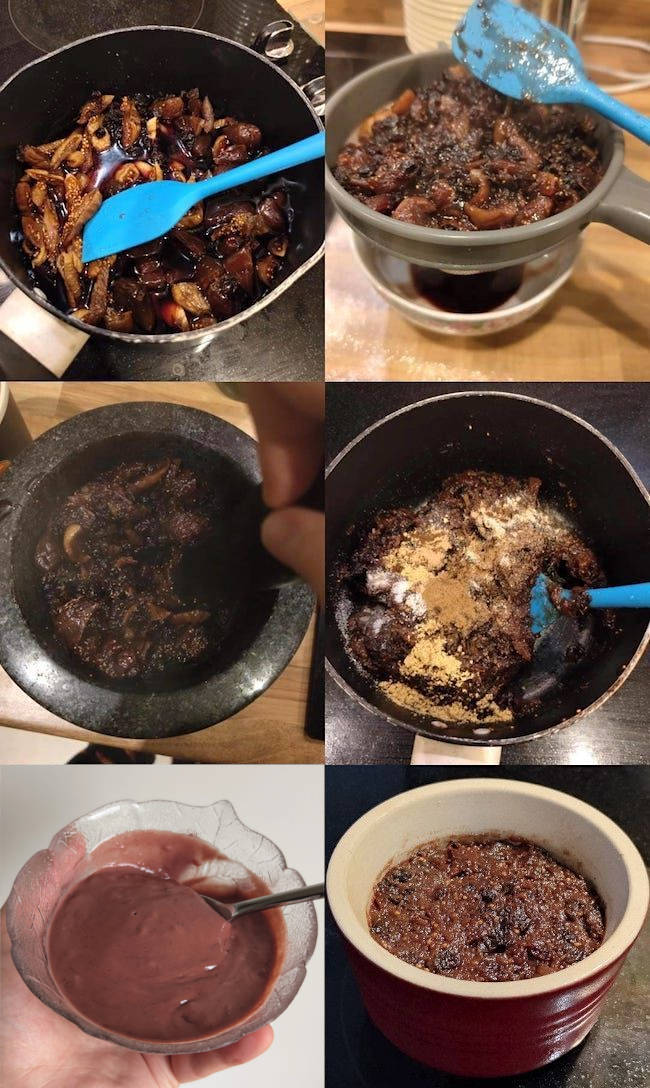Making Rapé - a medieval porridge
-
Rape. XX.IIII. III. Take half fyges and half raisouns pike hem and waisshe hem in water skalde hem in wyne. bray hem in a morter, and drawe hem thurgh a straynour. cast hem in a pot and þerwiþ powdour of peper and ooþer good powdours. alay it up with flour of Rys. and colour it with saundres. salt it. & messe it forth.
-
"Boil in wine equal quantities figs and raisins washed, stemmed, and sliced. Mash in a mortar and strain. Heat in a pot. Add spices inc. powdered pepper. Thicken with rice flour. Colour with sandalwood. Salt and serve."
The odd name caught my eye; upon reading, I thought it worth trying. It appears in my copy of Samuel Pegge's transcription of The Forme of Cury (c. 1390). Pegge footnotes it disyllabic: 'Rappy' like 'happy'.
After having made a few ancient foods with due attention, I didn't make something historically faithful here. This is more about two nice things I made by following a recipe somewhat intentionally badly.
I feebled around at first, e.g. when told to draw 'hem' through a strainer my reading comprehension failed and I chose to keep the fruits and not their juice, reducing the amount of liquid in the pulp then padding with rice flour. The result was a sticky, thick fruitcake much like a Christmas pudding, highly rich in flavour and heavy of texture, punctuated well by the light crunch of the fig seeds uncrushed. Best served this was with something like almond milk or double cream (right).

Spices I used cinnamon, galangal, sugar and crushed cloves. The pudding is even better if made with an equal third portion of dates.
Whether or not they used red or white wine isn't certain, but given its historical prestige, most likely white; I prefer red. See Christopher Monk's article on a sort of precursor to Zabaione (among other things) for more.
Consulting variations on this recipe and paying more attention to the English, it makes more sense that the liquid juices of these fruits were their primary interest - they coloured the result with the red of sandalwood for that the rice flour would pale the rich night-blood red of the fruits' juices. When heated, the sifted-in rice flour thickens rapidly (left).
Now, I think what they did was use a relatively high mass:volume ratio - I put far too much fruit in here. Still, while figs are affordable I make both together regularly, keeping a fruitcake for the days after making the fruity porridge.